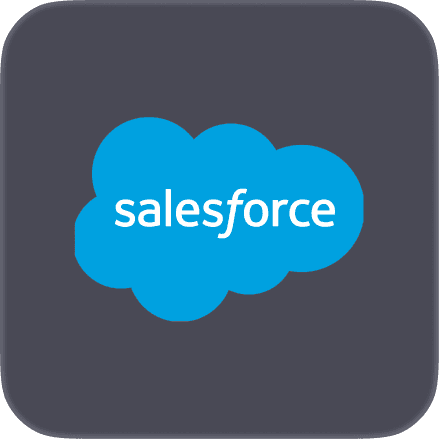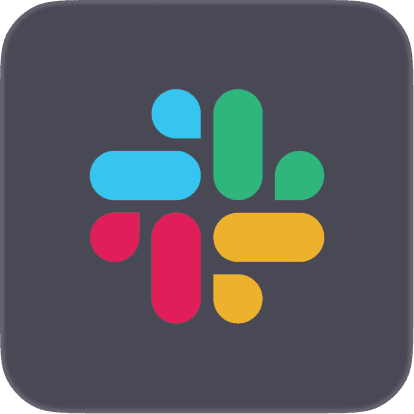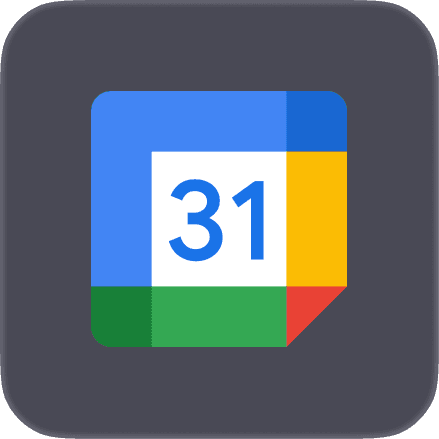Content
AI SDR
Ingesting customer context and building agentic AI actions for your AI SDR to automate tasks across your customers' sales tools.
AI SDR solutions can be incredible sales tools that can help a company scale their outbound sales efforts. Third-party Integrations expand what your AI SDR application can do by providing additional contextual data to your AI SDR and empowering your AI application to integrate with the rest of your customers' sales processes. While Paragon can be used for data ingestion to provide your AI SDR with context from your CRM and file storage platforms (a very common use case for Paragon), in this demo we will be emphasizing agentic automations in your third-party integrations, showing how your AI SDR can schedule meetings, create CRM tasks, and send notifications.
Automation Across Integration
SDR employees generally work with many different platforms when generating leads and meeting with prospects, such as updating leads or accounts in the CRM, booking meetings on their AE's calendars, or prepping the AEs on the demos they've booked with context. This is where your AI SDR application should be able to generate additional value for your customers beyond just prospecting, and it’s why integrations become important; the ability to automate tasks in not only your application, but also your customers’ CRM, messaging, calendar, and other platform becomes essential. In this AI SDR use case demo, we will be demonstrating how an AI SDR can:
Look for availability and schedule a meeting based off your customers’ Google Calendar
Send a notification in Slack with meeting details
Create a Salesforce task with meeting details
Automated Scheduling Use Case
In this first use case, our AI SDR Agent was able to query and perform actions in Google Calendar’s API to:
Pull an employee’s Google Calendar to look for their existing meetings and free blocks
Perform an agentic action, creating a Google Calendar invite to a prospect after having a conversation
For the purposes of this demo, we are simulating an AI SDR chatbot interaction, but we can have very similar interactions with an AI SDR email agent where communication and actions are done via email.
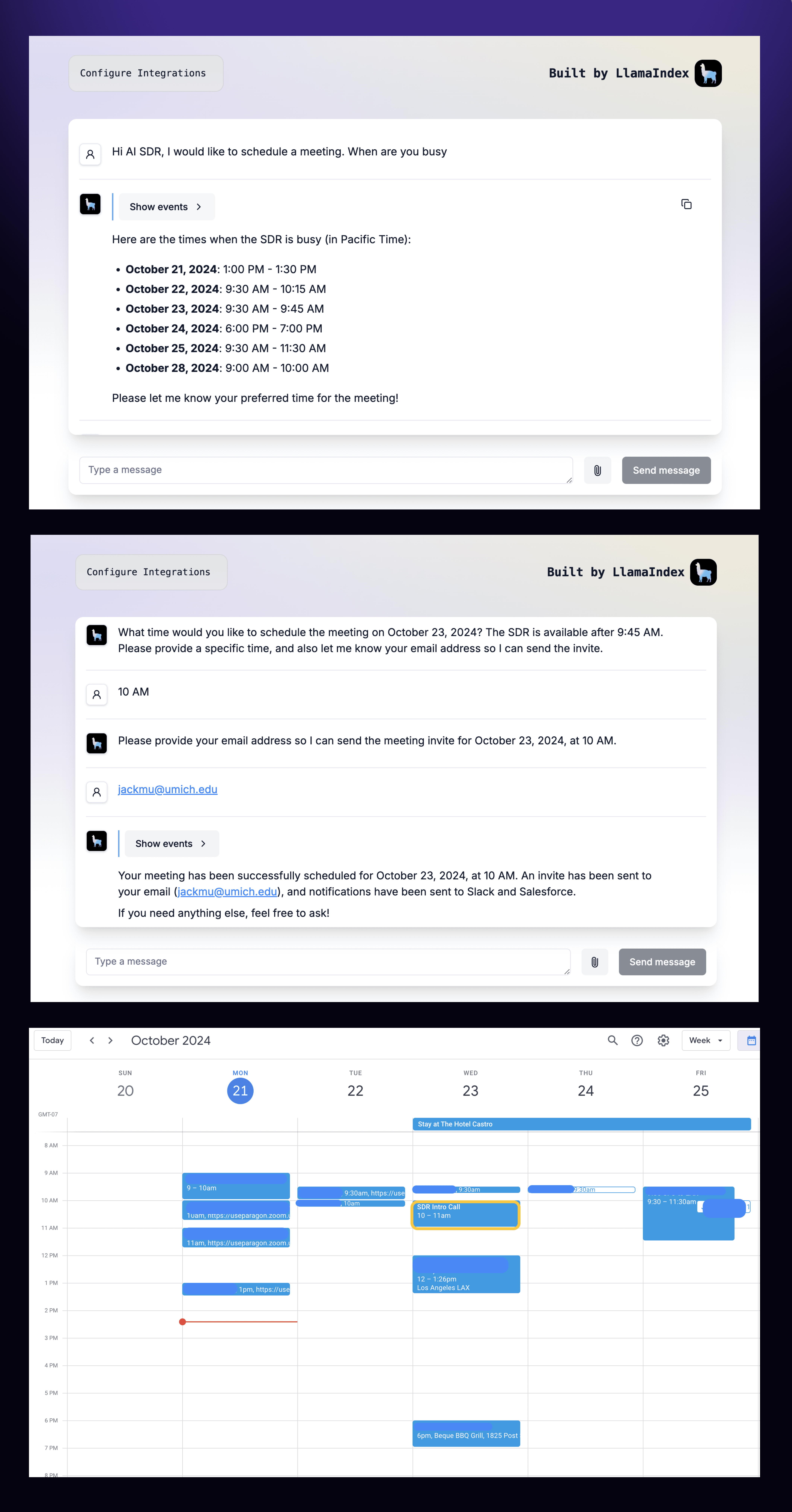
Paragon enables our AI SDR to have real time visibility into Google Calendar data and provided the tools to be able to create meetings via Google Calendar’s API. We can interact with Google Calendar’s API directly without worrying about how auth is handled, getting an access token, or refreshing credentials. We can even use custom javascript functions in a workflow to perform parsing or other custom logic. This allows our AI SDR to automate the process of scheduling meetings with the sales team.

Automated Notifications in Slack
In our second use case, our AI SDR can send a Slack message to our team as soon as a new meeting is scheduled. We wanted our AI SDR application to have multiple channels of communication as we know customers generally use multiple platforms to track their sales processes.
Picking up right after our AI SDR chatbot has scheduled a meeting, the chatbot sent a Slack message with the time and prospect contact.

For basic commands that don’t need custom javascript or steps, Paragon provides workflows that can be assembled in minutes, and even a proxy API if you just need authentication handled and would like to handle everything else.
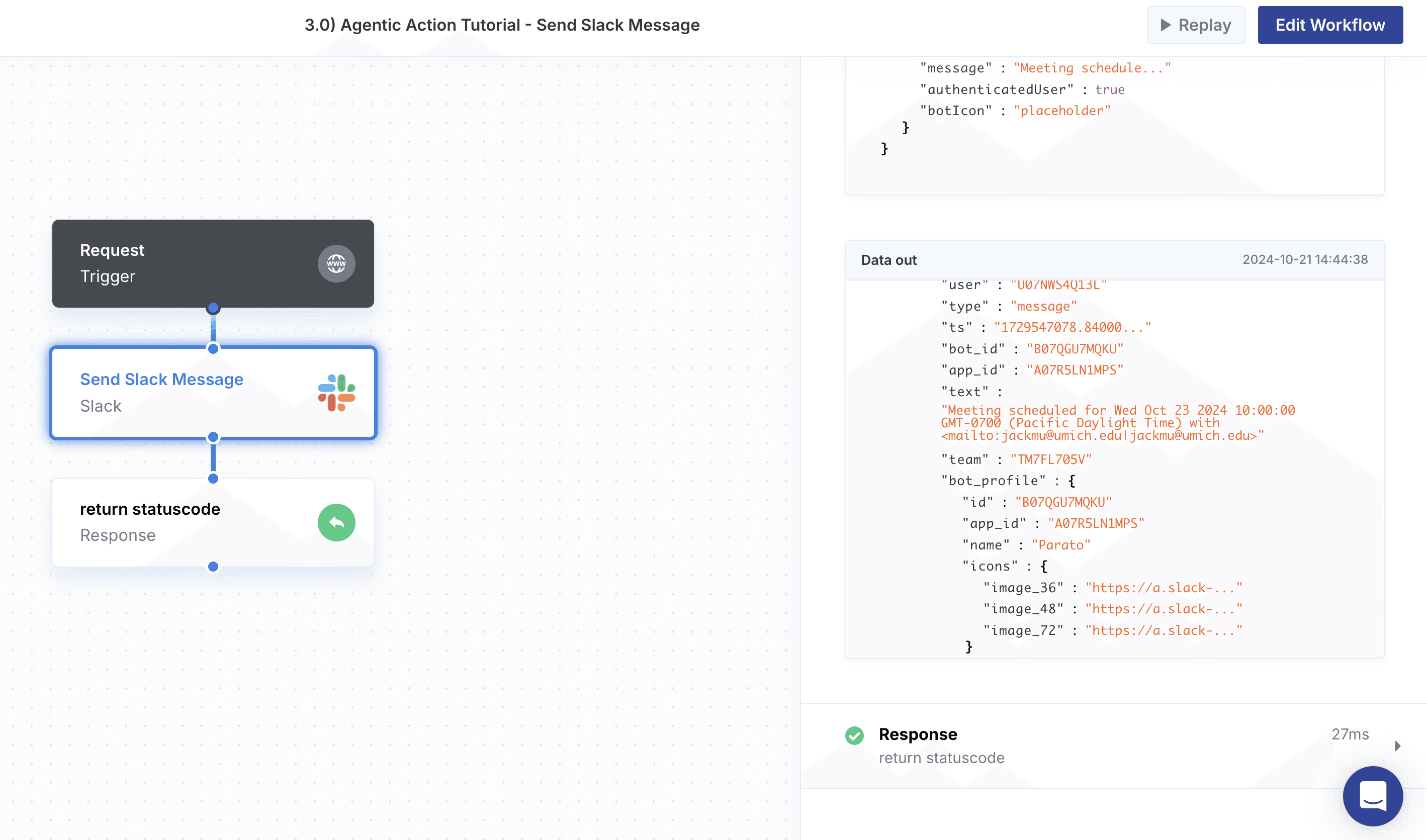
Automated Salesforce Tasks
In our last use case, we will be automating some of the sales hygiene tasks with a CRM integration. Any mature sales organization will want their CRM (whether it’s Salesforce, Hubspot, Microsoft Dynamics, etc.) to be updated will all customer-facing activity, including any touchpoints from your AI SDR. As such, our AI SDR application has automated Salesforce task creation capabilities, including:
Creating a task in Salesforce as soon as meeting is scheduled
Attaching that task to the relevant contact with the meeting title and due date of the task
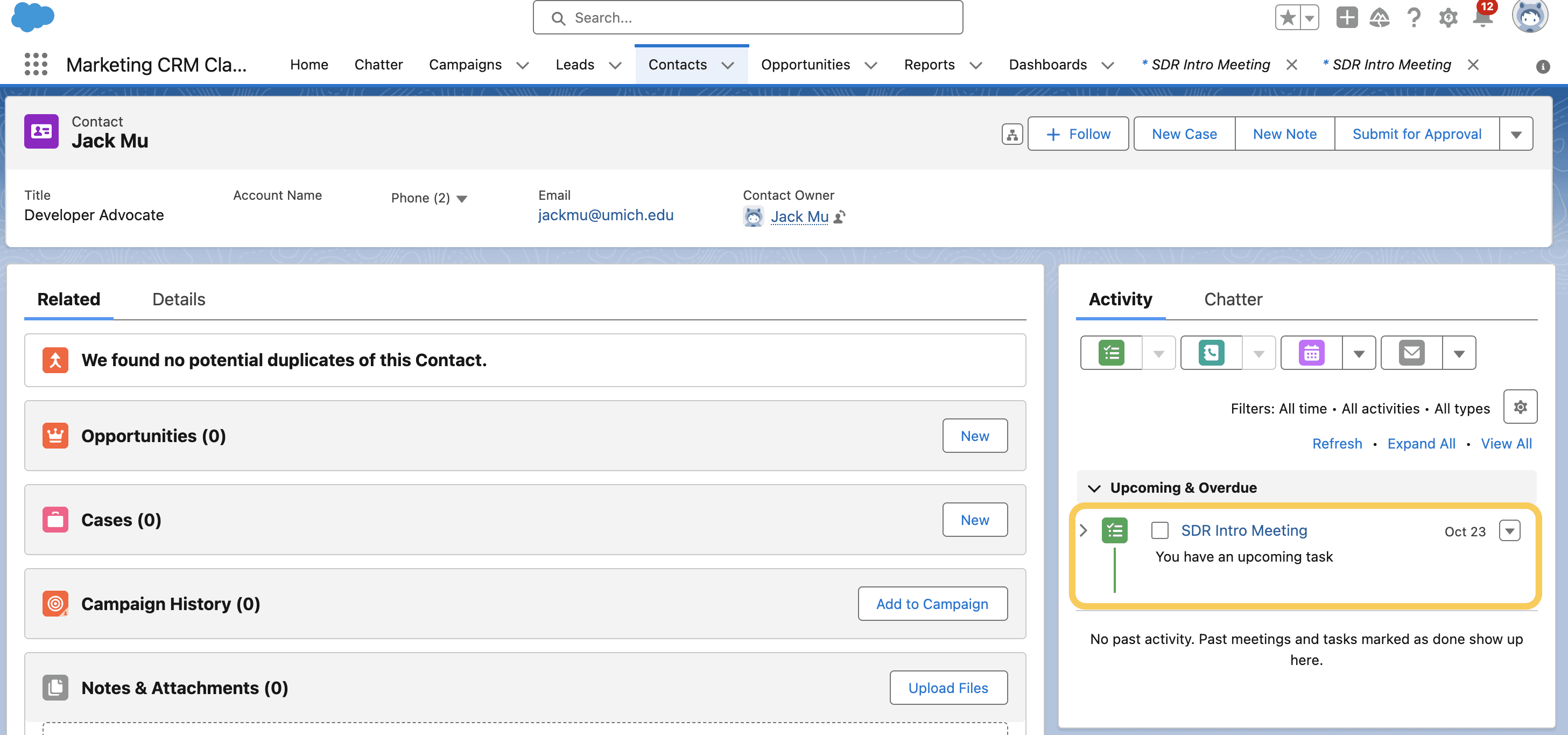
Workflows are a great medium for multi-step jobs, almost like writing code via Paragon’s UI. This allowed our AI SDR application to attach tasks if a contact exists, or create the contact and the task if the contact has not been created yet in Salesforce.
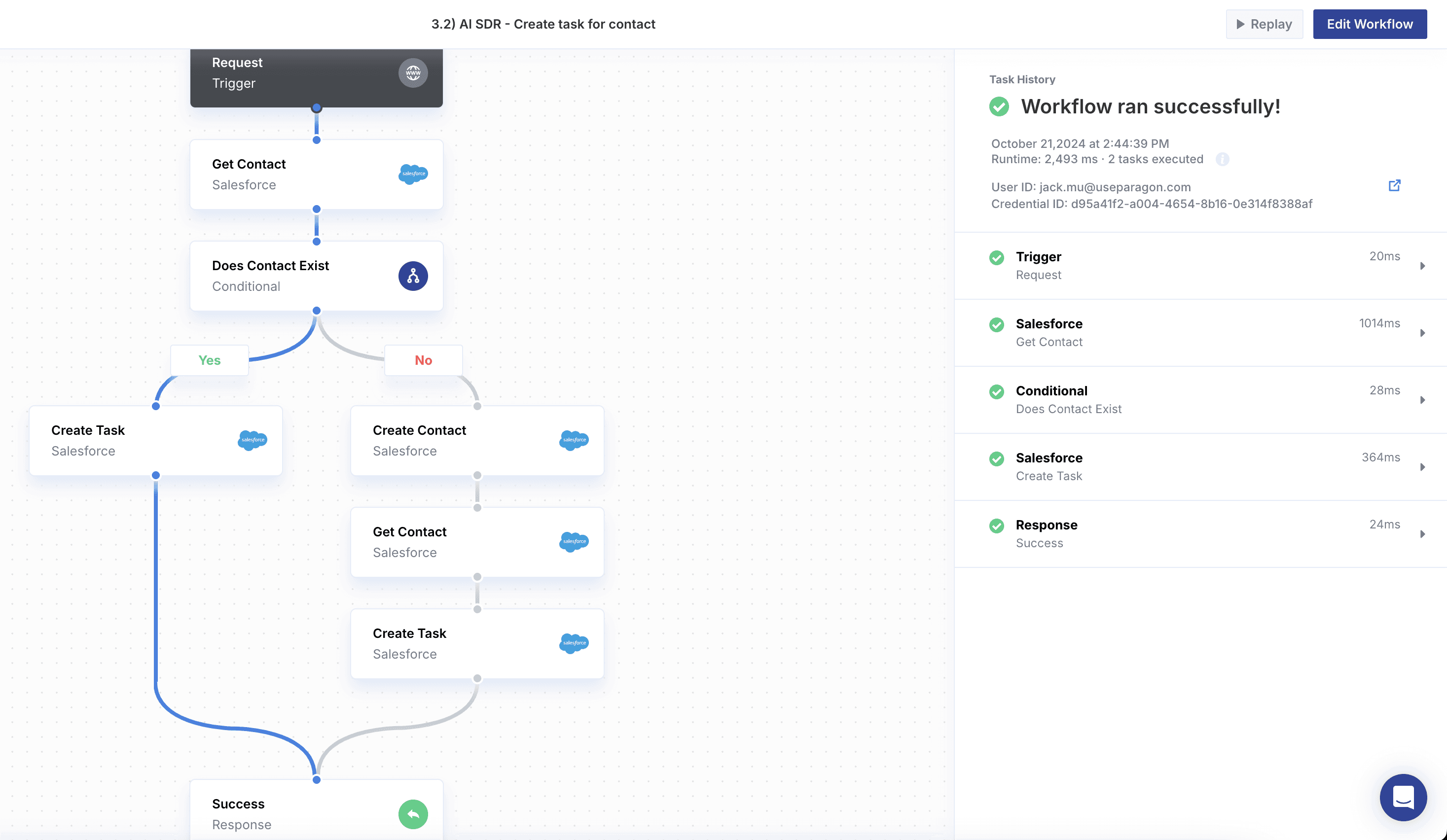
Paragon’s aim is to abstract away integration specific domain knowledge with managed APIs and workflows. This abstraction empowers developers to focus on building business logic for Google Calendar or Slack or Salesforce data, rather than worrying about different authentication mechanisms, changing data standards, and other third party specific nuances.
Wrapping Up
In this use case demo, we showcased how an AI SDR application can query data and automate tasks in third party platforms like Google Calendar, Slack, and Salesforce. The added data sources and automations that come with building out integrations can make your AI SDR even more capable, making it an essential employee-like tool in your customers’ sales ecosystem.
TABLE OF CONTENTS
Integrations
